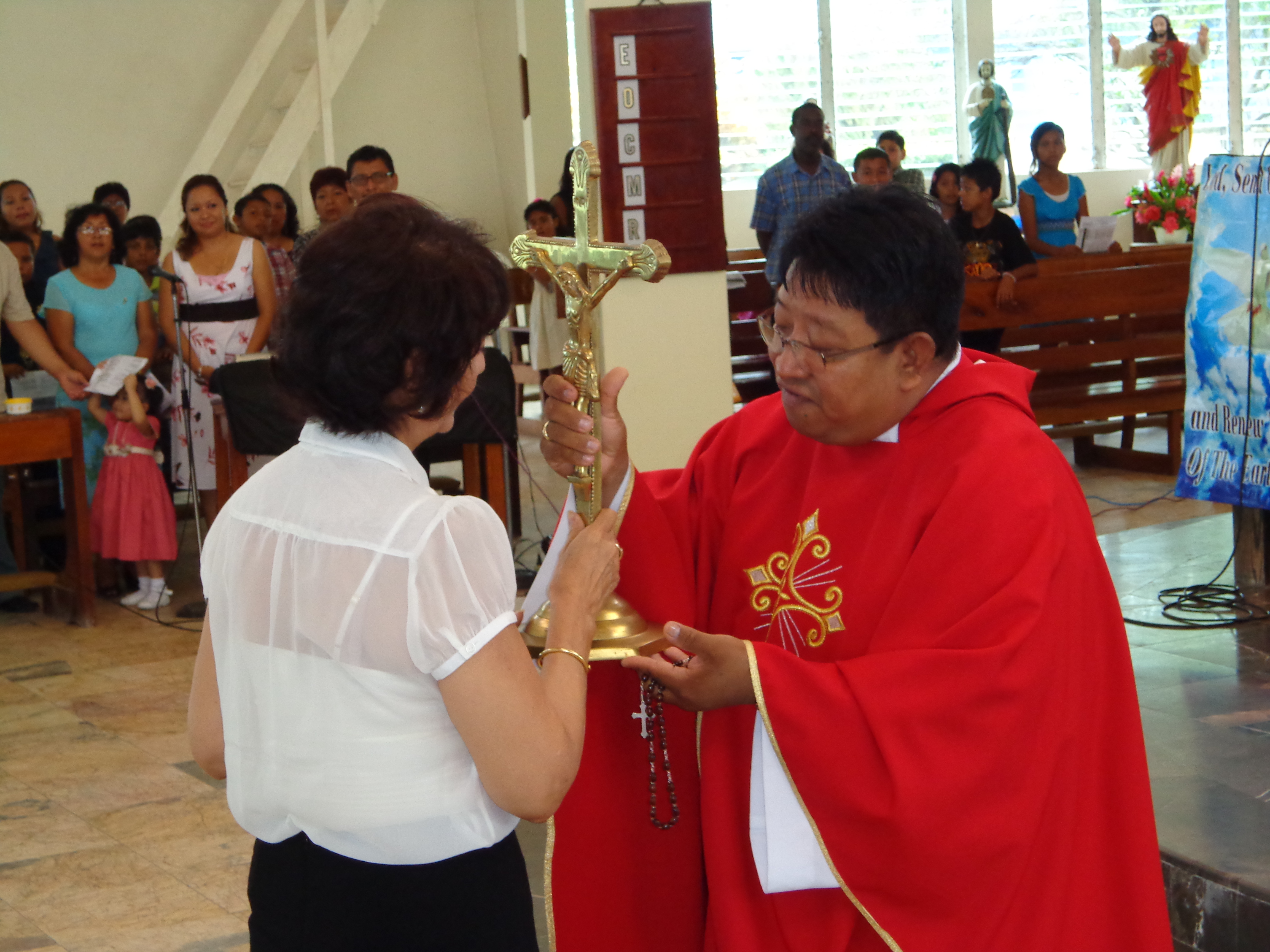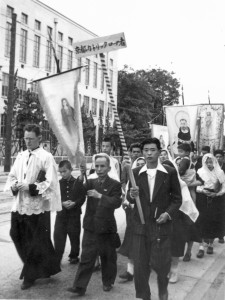Viatorians of Canada, France, Spain and the United States today serve in eight missionary countries. How did this world wide effort begin? How did it expand?
In 1927, our Superior General Fr. M. Roberge, CSV, had an audience with Pope Pius XI on Feb. 19, 1928. He reported on the status of the Viatorian Community and presented the Pope with “a substantial gift” collected in our houses “for the missions.” The Pope used this opportunity to ask if we could do more – specifically if we would send Viatorians to foreign countries?
1928 was a Chapter Meeting year. The meeting was in Brussels. The Capitulant studied the proposal of Pius XI. The Provinces were urged to consider adding “to its present works, that of the mission.” In an audience April 7, 1930 the General informed the Pope that the Province of Montreal was prepared to respond. Pius XI told Fr. Roberge: “Your Community can be confident in the future God will be blessed to personal, its works and its sacrifices.” The Canadians chose to work abroad with the Querbes Foreign Mission in Supingkai, Manchuria. On Oct. 21, the first four missionaries were announced: one priest and three brothers. They arrived Oct. 3, 1931 on the feast of St. Theresa, Patroness of the Mission. By fall 1932, the Bishop built a two-room schoolhouse where English, Chinese and Japanese were taught to high school level students; other high school subjects were added. During March, 1933, classrooms and a dormitory were added for 150 students.
The Chicago Province joined the mission in 1933 when Fr. Roger Drolet, CSV, and Br. (later Father) John J. Ryan, CSV. The project became part of the North American Mission Board. In 1937, when Manchuria was independent but part of the Japanese Empire, Japanese language became the priority. By December, 1941 all foreign missionaries were declared “enemies” and were interned. Fr. Drolet and Br. Ryan were expatriated through an exchange of prisoners and returned on the Swedish passenger ship, Gripsholm.
But again in 1946, the Provincial of Montreal received a message that Pope Pius XII asked his help … to carry the message of redemption [to the Japanese]. In 1947, the Congregation of Propaganda Feda “thought the moment had come to invite the Clerics of St. Viator to provide missionaries for Japan.” (November 20, 1947)
Provincials of Canada and United States accepted the invitation Feb. 7, 1948 to resume the secondary school apostolate in Japan with Fr. Drolet and Fr. Murta. Bishop Raymond Lane MM ,who lived with our men in the Manchurian Concentration Camp, suggested Kyoto. A novitiate was opened in 1947 with the first novice taking habit on Dec. 7, 1947. The foundation of the North American 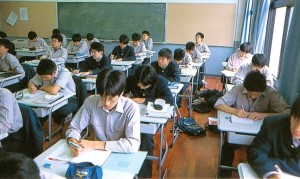 Province sent 20 missionaries. St. Viator, Kyoto was founded March 1, 1951. Rakusei (Star of the Sea) high school opened March 25, 1952. U.S. Viatorians in the mission to Japan were Fr. Roger Drolet (1948; Formosa 1953); Fr. Francis White (first principal, Rakusci 1949); Fr. Arthur Lemrise (1950); Fr. John Puisis (pastor, St. Viator Parish 1952), Fr. Joseph Moos (1955) and Fr. Michael Malley (1959).
Province sent 20 missionaries. St. Viator, Kyoto was founded March 1, 1951. Rakusei (Star of the Sea) high school opened March 25, 1952. U.S. Viatorians in the mission to Japan were Fr. Roger Drolet (1948; Formosa 1953); Fr. Francis White (first principal, Rakusci 1949); Fr. Arthur Lemrise (1950); Fr. John Puisis (pastor, St. Viator Parish 1952), Fr. Joseph Moos (1955) and Fr. Michael Malley (1959).
Our community time at Supingkai yielded three Chinese students who became Viatorians in Canada. All three were ordained. Fr. Paul Tcheng served a year in Chicago. Unable to return to Mainland China, all three opened our Viatorian Mission in Formosa (now Taiwan) in 1951. They opened Wei Tao (Viator) elementary and high school in 1956 in Taichung, Formosa. Fr. Roger Drolet joined them in 1953 as superior in Taiwan and Fr. Simon P. Lefebvre in 1958.
Fr. Querbes once said “I would like to go to Algeria [French North Africa] to teach Arabs catechism.” (Robert, 197) Our Viatorian confreres in the Province of Vourles and Rodez accepted his challenge and in 1950 began to consider a foundation in French West Africa. Later F. Michel Sudres as then Vicar General visited many sites. The most favorable proposal proved to be the Prefectures of Bouake, located in mid-country Ivory Coast. The Province of Rodez assumed responsibility in August, 1955. Mission activities soon began in the capital Abidjan. The Ivory Coast has since been raised to the Vice Delegation of the Ivory Coast.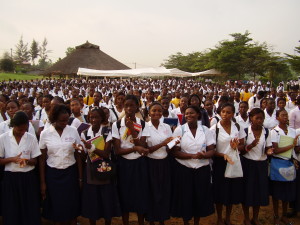
In 1960, Pope John XXIII appealed to religious congregations to expand mission activity. On Holy Thursday, 1961 the Chicago Province (US) responded to a request from the Pontifical Commission America Latino for mission possibilities in Latin America. The Latin American Bureau of the U.S. Bishop Conference (Then National Welfare Council) now National Catholic Conference of Bishops (NCCB) coordinated mission exploration. Fr. Manuel P. Loughran made exploratory visits to Santa Ana, El Salvador; Guatemala City, Guatemala and Bogotá, Colombia. In February, 1961, Fr. John Stafford, CSV, (provincial) Fr. Patrick J. Toomey, CSV, (mission procter) and Fr. Loughran, CSV, met to draw conclusions and define basic norms for their decision. The U.S. Province announced a mission effort in Bogatá, Colombia. The pioneers then were Fr. James Crilly, CSV, Fr. Adalbert Mayr, CSV, and Fr. Thomas Wise, CSV, (1961). Fr. Bill Fisherkeller, CSV, and Fr. Tim Judd, CSV, (1963); Br. Dennis Penning, CSV, (1965) Fr.John Pisors, CSV, (1967), Fr. Robert Bolser, CSV, (Buga) and Fr. Michael Elmore, CSV, (Bogota) (1969) Br. Richard Nuzzo, CSV, (1970) Br. Michael Rice, CSV, (1980) Fr. Mark Francis, CSV, (1982) Fr. Christopher Glancy, CSV, and Fr. John Norbert Peeters, CSV, (1988). Fr. Ronald Marcotte, CSV, and Fr. John Martin, CSV, ministered in 1993. Colegio San Viator opened in 1962. In 1966, the joint Canada/U.S. mission in Japan was divided into Japan and Taiwan (former Formosa).
A Congregation Letter by Superior General Leonard Audet, CSV, dated Jan. 6, 1996 entitled “Opening New Viatorian Foundations: A Challenge, A Hope” was animated by the missionary spirit of Fr. Querbes. The Provinces were challenged to again expand their missionary efforts. His challenge invigorated all the Provinces. The new Province of Chile, chose to mission in Bolivia, while Spain went to Honduras, and Canada established schools and a novitiate in Burkino Faso. The United States Province chose Belize 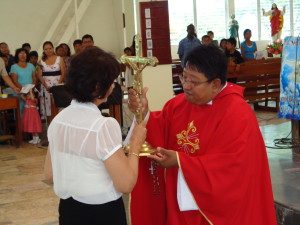 accepting a parish, St. Francis Xavier in Corozal Town with 24 mission stations and 18 elementary schools. The first pastor, Fr. Dan Hall, CSV, was assisted by Fr. Chris Glancy, CSV, (1998). Others who served in Belize were Br. Carlos Ernesto Flórez, CSV, (1996; 2006); Fr. John Norbert Peeters, CSV, (1996-2002); Fr. Moises Mesh, CSV, (2002); Fr. Jason Nesbit, CSV, (2003), Fr. Dan Belanger, CSV, (2007), Fr. Brian Cooper, CSV, pastor (2008-2009) Br. John Eustice, CSV, (2009-2013), and Fr. Moises Mesh, CSV, the current pastor. He was the first Belizean vocation, who professed his first vows in 2005 and was ordained in 2011. Fr. Chris Glancy was the second Viatorian and the first Chicago Province priest ordained a bishop, when he was named Auxiliary Bishop of Belize City and Belmopan, Belize on May 5, 2012.
accepting a parish, St. Francis Xavier in Corozal Town with 24 mission stations and 18 elementary schools. The first pastor, Fr. Dan Hall, CSV, was assisted by Fr. Chris Glancy, CSV, (1998). Others who served in Belize were Br. Carlos Ernesto Flórez, CSV, (1996; 2006); Fr. John Norbert Peeters, CSV, (1996-2002); Fr. Moises Mesh, CSV, (2002); Fr. Jason Nesbit, CSV, (2003), Fr. Dan Belanger, CSV, (2007), Fr. Brian Cooper, CSV, pastor (2008-2009) Br. John Eustice, CSV, (2009-2013), and Fr. Moises Mesh, CSV, the current pastor. He was the first Belizean vocation, who professed his first vows in 2005 and was ordained in 2011. Fr. Chris Glancy was the second Viatorian and the first Chicago Province priest ordained a bishop, when he was named Auxiliary Bishop of Belize City and Belmopan, Belize on May 5, 2012.
By: Br. Leo V. Ryan, CSV

